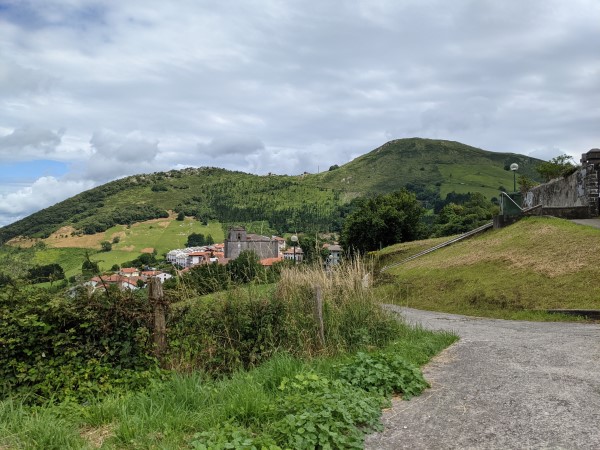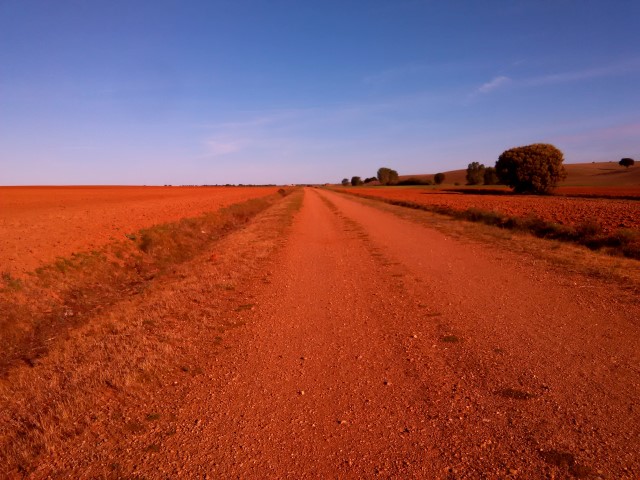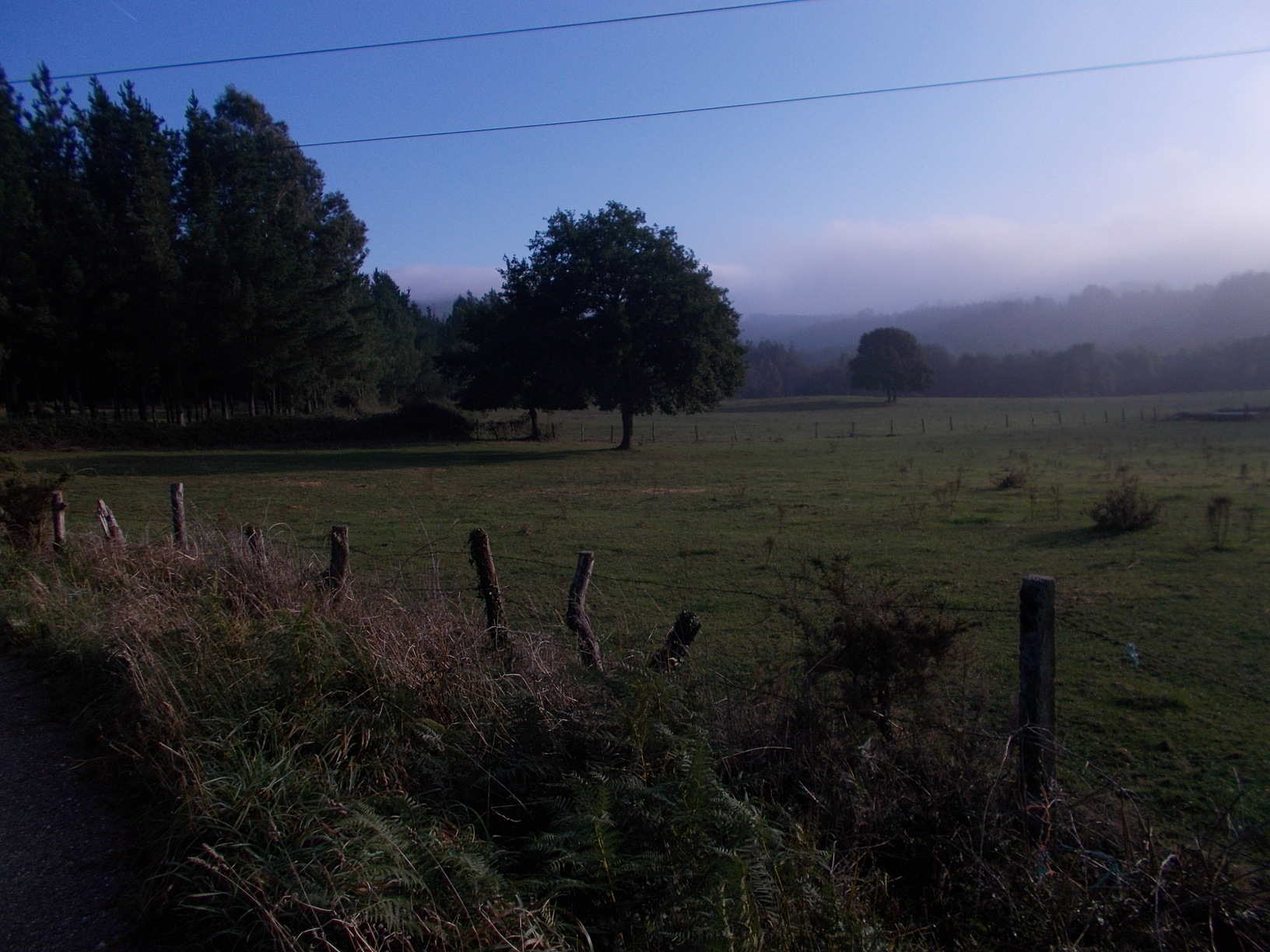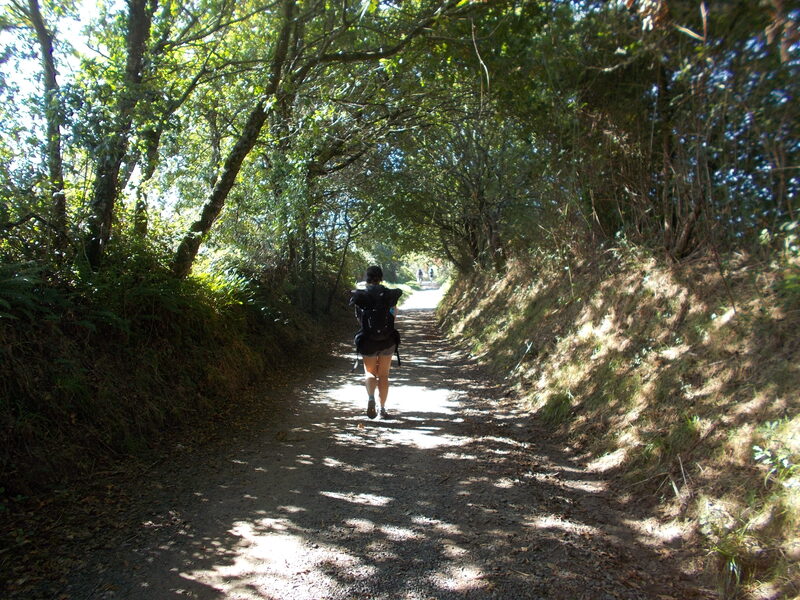Let’s start with facts. Camino de Santiago isn’t the most difficult long walk in the world. It is actually one of the easiest waymarked trails out there, when we look at trails that span over 500 kilometers (Camino Frances has about 780 kilometers all the way from Saint Jean to Santiago). The first reason is elevation. You’ll gain about 12,000 vertical meters on the Camino, which may seem like a lot. However, on a trail of similar distance in Alps or Andes you’ll easily cover 40-45,000 vertical meters. The less the elevation gain, the less fit you need to be to successfully finish the walk.
Another thing to consider is the terrain. Sure enough, there are a few technical sections on the Camino, or rocky sections that can get slippery in rainy weather. But 80% of trail you’ll work either on tarmac, or on wide gravel trail, or on some pleasant grassy path. Camino Frances has a nice variety of landscapes and trails, but compared to other trails of similar distance in Europe, the terrain isn’t technical. This again lowers the fitness requirements, since once you lack fitness it is hard to navigate steep rocky sections or over-grown single trails that you may confront on other long distance hiking trails. Such challenges do not await you on the Camino.
Table of Contents
Infrastructure has the biggest impact on how fit you need to be to walk the Camino (or any other way)
The biggest factor of all, however, is infrastructure. I have walked numerous Caminos in Spain, but I also followed long distance trails in the Himalayas, in the Andes, and in many countries of Europe. Easily I recall trail sections where for 100 kilometers I didn’t pass a single village, a mountain hut, or any other place where I could refill my supplies, and potentially nurse my injuries. I slept in a tent or in the open. Needless to say, it is very important to be incredibly fit on such trails, because anything can happen, and you should have a capacity to push through fatigue and pain and eventually reach the civilization again :). Camino Frances is a completely different story though.
Except of a very few sections (such a certain stretch on Messeta between Burgos and Leon), you’ll have a bar or restaurant on every kilometer or two, many pharmacies, and most importantly many pilgrim hostels. This significantly lowers the needs on your fitness, since you do not have to cover huge distances if you do not feel like doing that (or if your fitness doesn’t allow you to do so). Said in other words, you can call it a day after 5 or 10 kilometers. I actually like this aspect of the Camino, since it allows pilgrims of all ages and shapes to do the Camino.

– A typical terrain on the Camino – wide gravel or tarmac road. It may not be the most picturesque way, but it is much easier to walk o such terrain for people who aren’t in a good shape fitness-wise.
You can counterbalance your fitness levels with right equipment and right decisions
What many people do not realize is that you can actually make your Camino easier with the right equipment. The most obvious thing is your backpack. You can see on the Camino pilgrims with backpacks weighting over 15 kilos, but also people with 3.5 kilo backpacks, and people who carry no backpack at all (just a bottle of water), having their packs transported from one albergue to another (such services exist on both Camino Frances and Camino del Norte).
Some people look down on such pilgrims, but I personally see it differently. Camino is a great experience, and if someone is fit enough to do it without a backpack (but would likely not succeed carrying one), there’s nothing wrong with utilizing the service and having your backpack transported from one pilgrim hostel to another. Needless to say, it is much easier on your body to walk with 4 kilo backpack than it is with 14 kilo pack. But it isn’t only about the pack…
Hiking sticks, alternative ways, and so on
What helps a lot, especially if you are overweight, are hiking sticks. We have a separate article online, discussing both pros and cons of carrying them, and you can check it out here: Walking sticks on the Camino. In a nutshell though, people who do not hike regularly back home tend to have problems with knees on the Camino, or even worse, with their hips. Distributing the load more evenly on your legs, arms, and back (which happens when you use walking sticks) helps a lot to mitigate or even avoid these issues.
Another thing is the choice of a way you follow. Back on my first Camino, I thought there was one official way from Saint Jean to Santiago that has been followed by pilgrims for centuries. I couldn’t have been more wrong! Camino de Santiago is simply any way that starts somewhere and ends in Santiago de Compostela. Following the French way, you will see many alternative routes. Some will be shorter than original routes, some will follow a flatter terrain, and some are actually longer and take you towards a special sight on the way etc.
If you aren’t particularly fit, it is important to study these routes, and decide accordingly. Mark my words: there’s no shame in taking a shortcut, or opting for an easier alternative. Your goal is to reach Santiago on feet, and not to prove something to someone. Do it your way, choose alternative routes that fit you, and do not push it just because everyone is walking further that day. Remember that Camino is a marathon, not a sprint. It often happens that those pilgrims who cover long distances on few days in a row often have to stop later on, having blisters so bad that they cannot continue until they heal them. Or they quit altogether. And in any case, Camino is not a race….
A journey of a thousand miles starts with the first step
In my opinion, you can embark on a Camino regardless of your current fitness level. The key is to listen to your body and take it easy at the beginning, because it takes time until your body gets accustomed to walking day after day. I cannot emphasize enough the importance of taking it easy at the beginning, especially if you aren’t particularly fit at the moment. Of course, if you are an athlete and do long hikes/runs regularly back home, you can cover as many miles as you want right from the start. The key is to know yourself and to remain realistic about your own limits.
Good thing is that unless you eat three breakfasts every day (certainly a possibility on the Camino, considering the infrastructure), plus lunch and dinner and three snacks in between the main meals, you’ll get fitter as you progress on your way towards Santiago. I’ve seen that happen countless times. You can even lose weight on your Camino, as long as you stick to some rules (check my article on it here: Can you lose weight walking Camino de Santiago). But the key is to take it easy and avoid walking injuries. If you manage to do so, you can certainly do the Camino with any level of fitness.

– One of the seemingly endless stretches of a dirt road on Via de la Plata (near the city of Salamanca). These roads have a certain beauty for a sensitive eye, especially in the morning and in the evening. Such stretches seem endless, but just like with any other walk, one step and then another and another will eventually take you to the next bar or next albergue :).
Some training back home won’t hurt
Even though you can do Camino regardless of your body weight and current fitness level, it doesn’t hurt preparing for your walk a bit. The key is to simulate the conditions of the trail as much as possible. For Camino Frances, you can do the following:
- Walk for 1-2 hours a day, ideally many days in a row (just like you’d do on the Camino), with small backpack on. In an ideal case you should include some hills in your walk, simply because you will cover some elevation on the Camino.
- Go for a longer hike once in a week, ideally in nature and with a backpack as heavy as your camino pack will be. Keep prolonging the distance progressively, instead of going for 20 miles on your very first walk.
- Any aerobic exercises make for a good Camino training. Think swimming, cycling in a low intensity, jogging, etc. At the end of the day, you should enjoy your training. If swimming isn’t your thing there’s no point in forcing it.
- Drop some weight before leaving for Spain. Mark my words: you will feel every extra kilogram in those Spanish hills. You won’t feel it only on your breath, but also on your knees. If you are overweight or obese, the best thing you can do for your chances of actually completing the Camino is to lose some weight before you even fly to Spain (note: check my guide on where to fly to start the Camino).
Final thoughts
There isn’t any specific fitness level you need to reach to be able to walk the Camino. I’ve see women weighting 300 pounds doing the Camino, I’ve walked with 87 years old pilgrim from Italy, and I’ve seen people completing their pilgrimage with all sorts of limitations and injuries. But you should remember a few things.
First, the better your fitness level the more enjoyable your walk will be. Maybe you want to suffer on your pilgrimage, for penance or whatever other goal on your mind. That’s fine in my book. But if you want to enjoy the walk, it is much easier to do it when you are in a decent shape.
Second, you should listen to your body and know your limitations. Do not compete with anyone. Do not feel bad if others cover more miles than you do on a day. That’s not really a purpose of a camino. You have your pilgrimage, an experience unique to you only. Do not let petty things like a desire to be better than someone else ruin your Camino.
Last but not least, walking the Camino and finishing the Camino are two different things. Many people quit every year, or they take buses or skip big part of the way. Seeing people flying back home from Spain going directly for a hip or knee surgery isn’t uncommon either. Keep it on your mind. Start super slow, listen to your body, and build your fitness over time. That’s the way how to finish the Camino even if you aren’t in the best possible shape. Enjoy your walk!
Matej




![Ultralight Packing List for Camino de Santiago [2025 Edition]](https://caminolovers.com/wp-content/uploads/2022/03/altra-shoes-640-x-480.jpg)


